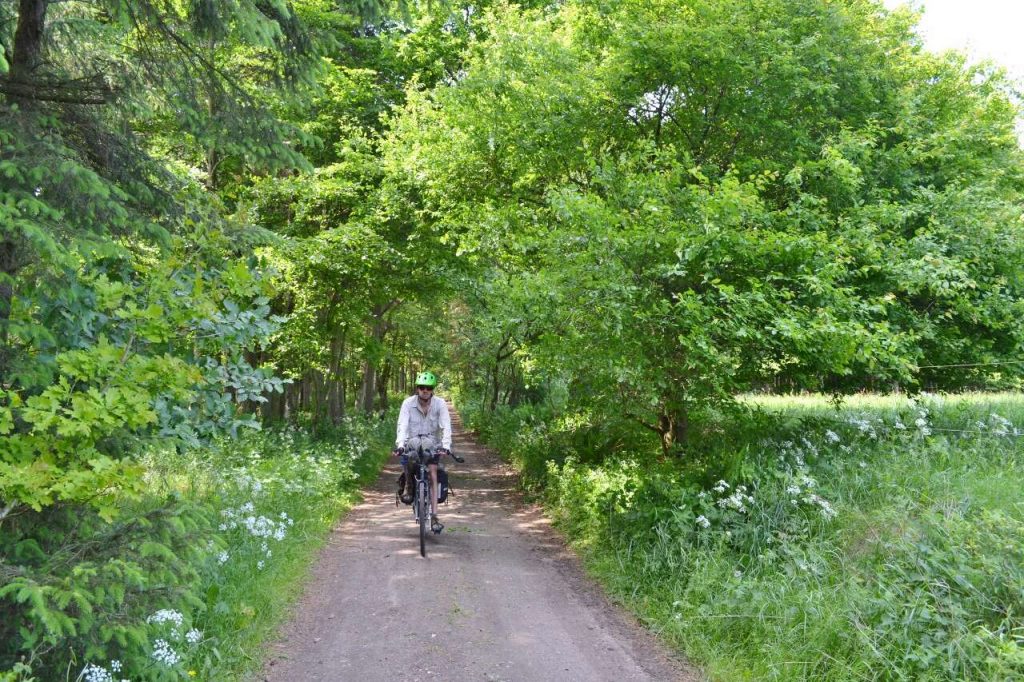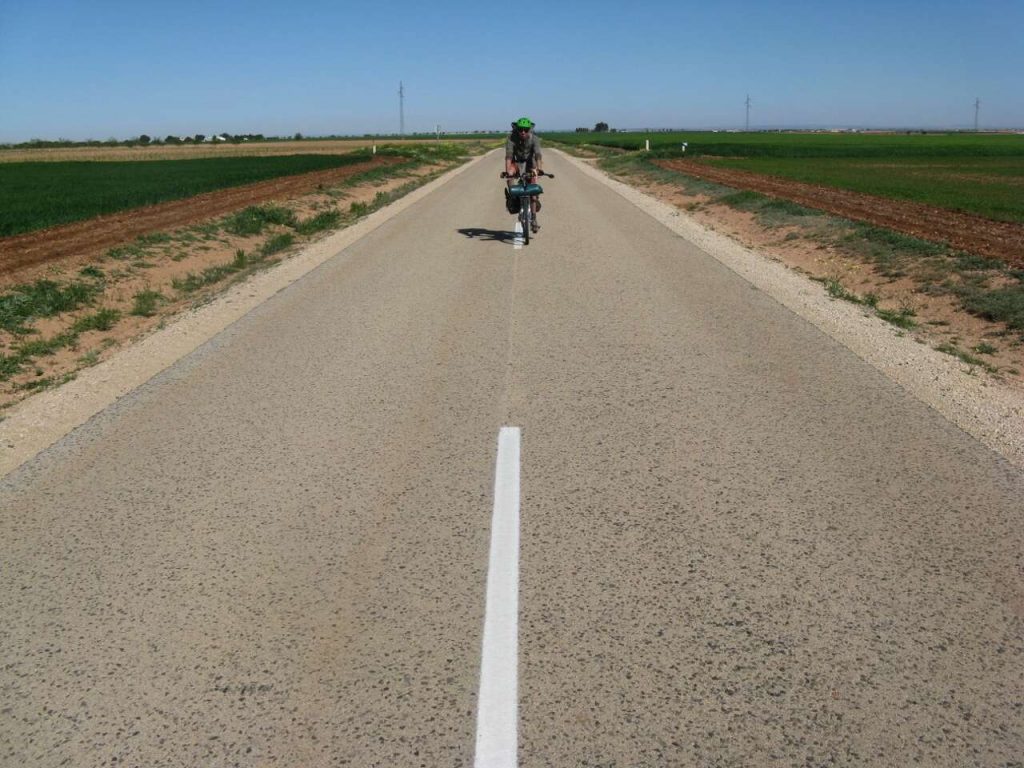Seeing the World on Two Wheels
What it’s like to explore the world from the seat of a bicycle
For the Aspen Times Weekly
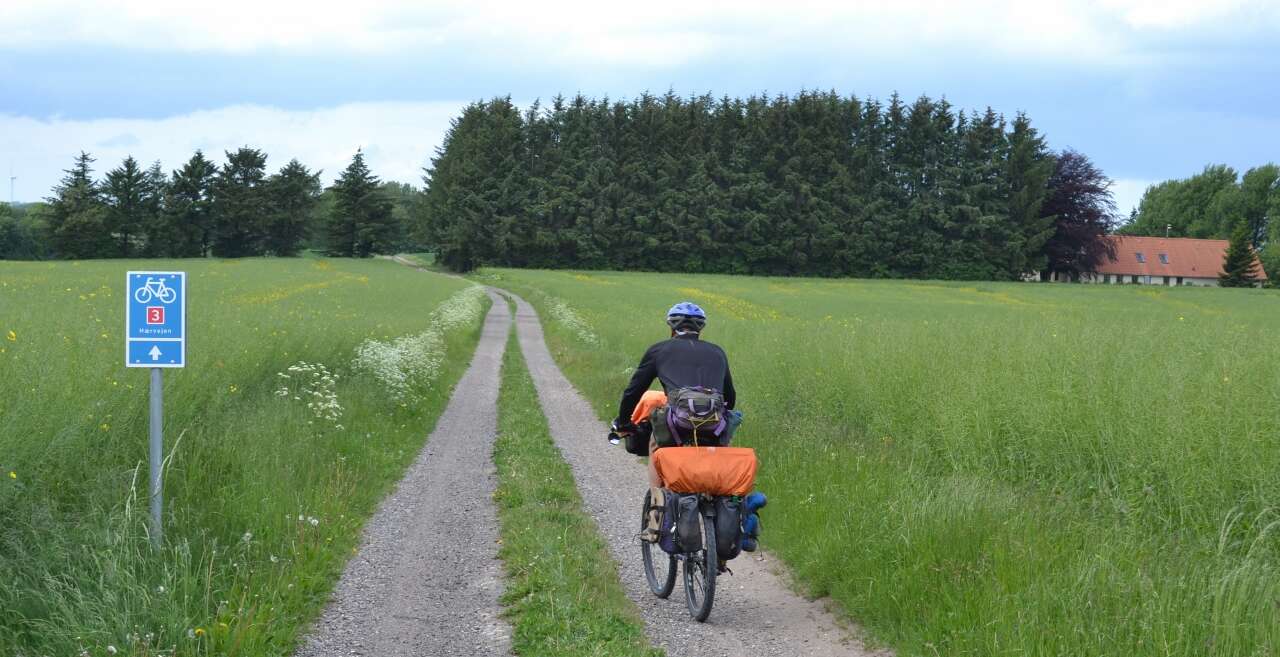
Travel is about freedom and adventure, risk and reward. Bicycle touring is one of the most engaging, interactive and participatory means of having it all, and I’ve been at it for 50 years. With two wheels and a spirited attitude, the world is a wonder of sensory stimulation.
Enlivening the Body
Bike touring is not the easy way to go. Ask anyone who’s done it and they will acknowledge at least occasional physical suffering. But taking the easy way rarely tantalizes, challenges or pushes our thresholds. Going easy fails to provide lifelong memories like the many I have taken home after long and arduous journeys:
Our hidden campsite on the Island of Crete is overshadowed by hundred-meter cliffs next to a flowing mountain stream. The Libyan Sea is a quarter mile away with the clearest water in the Med. We swim in salt, bathe in fresh. Tall pines provide shade against the searing sun. Jasmine scents the air. The lush red blooms of oleander decorate the canyon floor. Goat bells jingle as herds graze along the cliffs. Gulls cry while soaring against a deep blue sky.
In a small Greek village, my friend and I meet two Dutch sisters. We watch the sunset together, sipping Metaxa. The next morning, the sisters find us at our camp. We guide them along the wave-washed shore to a deserted cove among huge boulders where we lay out our camp pads and shed our clothes to feel the sun toast our skin as the sea pounds the rock walls sheltering us.
On one side, I gaze into the cool, clear water of a tidal pool and lazily follow the patterns of the foam-flecked surf. On the other side, I gaze at the brown body of one of the sisters. Her bronzed breasts are mounds on her strong chest. Her blonde hair is held behind her head with a golden clip, wispy curls upon her brow. Calypso? Circe? I feel like I’m living a Greek myth.
At camp later that afternoon, I watch a gaunt goat herder clad in sandals, carrying a staff, push his herd of shaggy animals down the canyon. He wades the river, lifting his paint legs, working his flock, shouting and whistling. He moves quickly in the hot sun, and the goats respond with blats and the tinkling of bells. Later, in town, strides a priest dressed all in black. His head is swathed in a black wrapping and his long gray beard hangs from his chin like sphagnum moss.
These journal entries describe “wild camping” at the mouth of the Samaria Gorge in 1984 where my friend and I discovered, by an accident of exploration, the reward for being on our own, as bike touring should be.
Posh cycling companies may seem convenient for guided bike tours. Sign up for a trip and you will spin the pedals and take in landscapes, but you will lose a vital sense of discovery that makes independent bike touring romantically adventuresome. A bike tour is about much more than the riding.
A self-guided tour begins with studying maps, plotting routes, calculating distances, considering logistics. There’s no one there to hold your hand, so you rely on yourself. You accept an edge of risk that hones your instincts and makes every kilometer uncertain and dynamic.
I have never felt so alive as when I don’t know what’s around the next curve, what the next village will offer, how to handle whatever comes up that defines my pedal-powered journey – and bike touring is all about the journey.
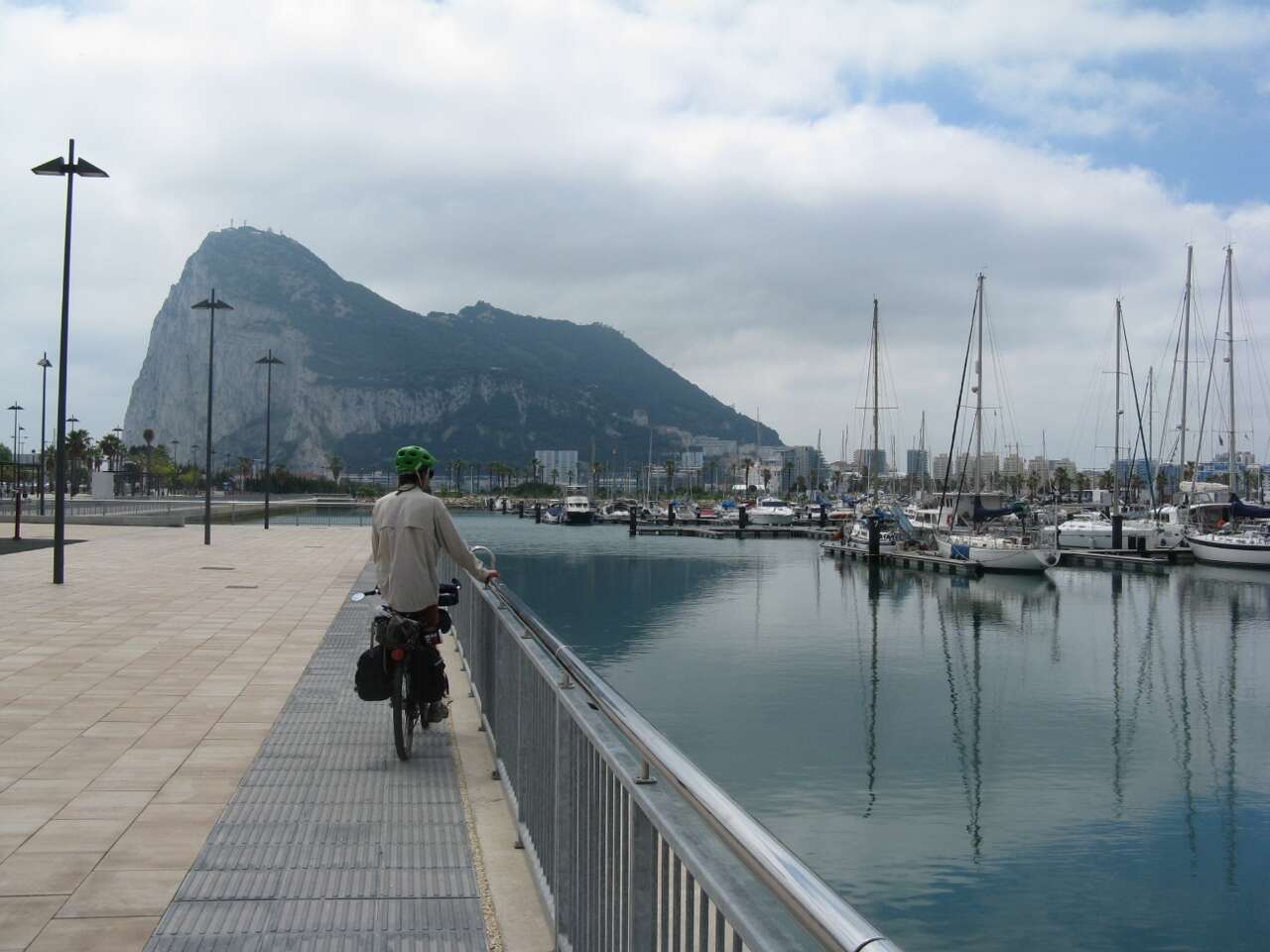
Stimulating the Mind
Touring from Bordeaux across the Pyrenees to Madrid, where I had started two months before, tested the limits of my endurance while offering something I hadn’t recognized: this trip was a mental necessity. My journal entries from May 1991 describe the harsh, desiccated landscapes of Andalusia in Northern Spain, which became a clarifying crucible for the value of voluntary suffering as a contrast to the easy and predictable life I had left in my rear view mirror:
A tiny bug crawls across the lens of my sunglasses. It moves like a shadow in my field of vision, noticed and ignored. I have been riding through a hatch of flies and they are plastered on my face, arms and legs like hitchhikers. But I’ve done some hitchhiking in my time, so I let them crawl and explore my body while I crawl along on my bicycle through the remote reaches of northern Spain.
I cannot be bothered by harmless insects. The stomach distress I picked up several days before in Southern France has distracted me from such petty annoyances with a dull, lingering ache and recurrent, sulfurous eruptions. One annoyance has allowed me to transcend another and, at the moment, I am more concerned with stomach bugs than with those roaming my flesh.
This is admittedly a low point, when the open road has lost its charm, when travel by bicycle has become an ordeal. I feel like I’ve had enough of indiscriminate wanderlusting, enough of hunching over the handlebars watching an asphalt blur.
I am wracked with doubts and at the mercy of the world around me. I am cycling across Spain with somewhat reckless abandon, which has rewards, but also vulnerability. Discomfort, loneliness, risk and a survival challenge create an ultimate distraction from the things I have left behind in comfortable Aspen.
My need is to push through this crucible of hardship and privation, and Spain is filling the bill with rugged terrain, harsh weather, noise, traffic and a universally cool indifference to my willful asceticism. As I pedal into the desert at the foot of the Pyrenees, I am arriving at the place I want and need to be.
My journal on these trips has become a confessional, recording memories sharp and vivid. It is as important as my maps, not for plotting where I am going, but for realizing where I have been. Persistent solitude and roadside attractions infused my mind. The metronome-like circular rhythms of spinning wheels and turning pedals induced a meditative, trance-like state that invited numerous epiphanies.
Discovering a Spiritual Quest
Touring the length of Israel in April 2014, the landscape was resplendent in history and culture, but demanding in parched Middle East deserts. There was not a green thing in site as my friend and I swooped down a steep series of switchbacks into the Mitzpe Ramon crater to traverse 100 kilometers of the Negev Desert. The lower we dropped, the higher the temperature. Soon, it was over 100 degrees, with neither clouds nor shade.
A tailwind gave us cruising speed, but no relief from the heat. Hours later, our water nearly gone, we were desperate for shelter. As if by miracle, we came upon a huge white gate and long fence line designating a kibbutz. Seeking help, we pressed what appeared to be a doorbell. What happened next made us feel like we stood at the gates to heaven:
Our prayers are answered by a handsome young man driving a small Toyota pickup. He invites us into what feels like a magical realm, saying we are just in time for the second Seder dinner. Would we be special guests and accept their hospitality? We nod mutely, still dazed by the heat and exertion. He leads us to a small mobile home encampment where showers rinse our salt-encrusted bodies.
At an appointed time, we pedal across a large spread of farm fields green with crops. We enter a courtyard bedecked with colorful lights where tables are laid out with bright flower. Dozens of beautifully dressed, handsome young people are seated. We join them and our glasses are filled with chilled wine made on the kibbutz. The dinner is a blur of delicious food, all locally grown. We are surrounded by lovely people who welcome us as if we are family. And, in a broad sense, we are.
This kibbutz was founded in the 1960s to encourage the unity of man. Here, in the midst of a sere desert, spiritual growth is inspired by communal giving and receiving – not just of food and drink, but of spiritual insights. After nearly a month of touring, we have discovered the purpose of our trip. We have come to the “holy land” for spiritual communion at a desert oasis flowing with artesian wells and brimming with youth and beauty. The desert blooms in a surreal expanse of cultivated desert in the midst one of the most forbidding landscapes in the world.
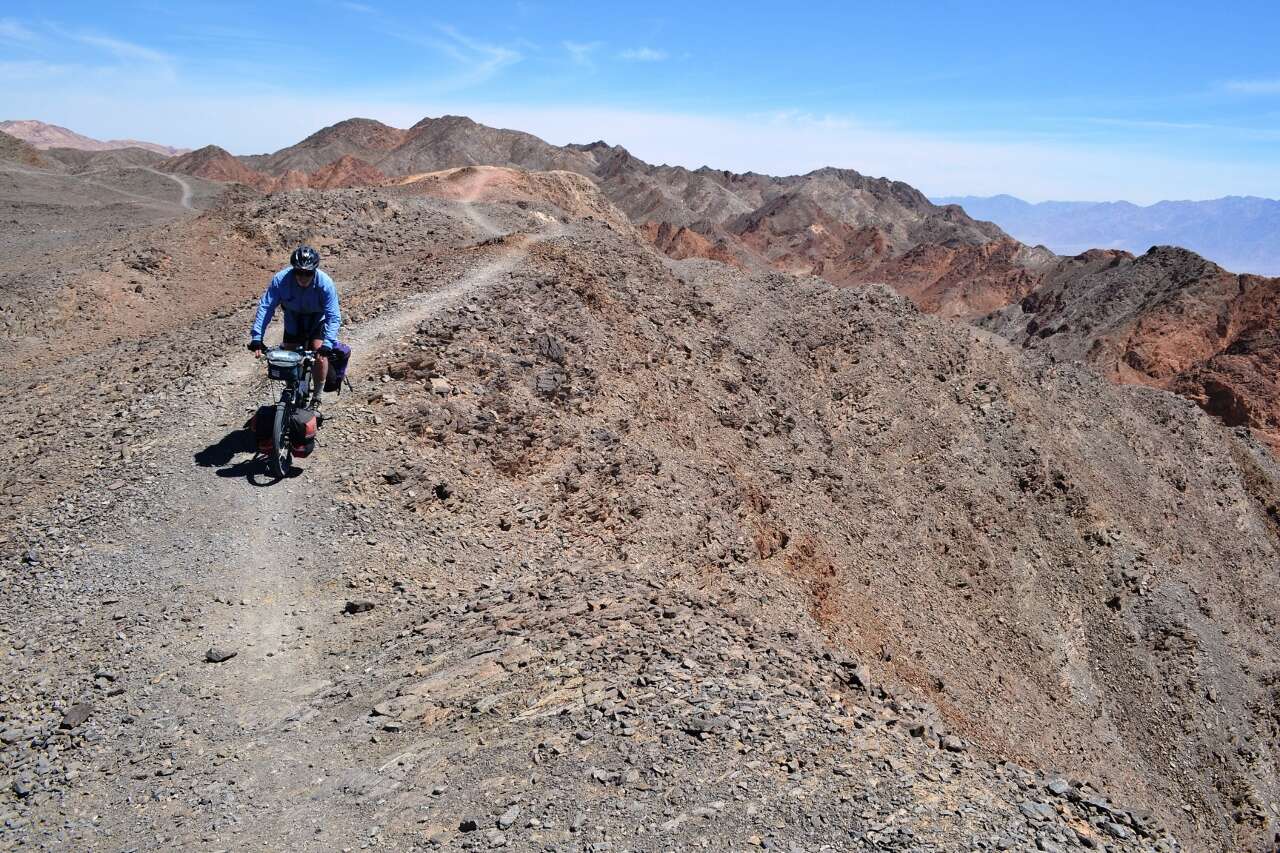
Spiritual awakening via bicycle, mental stimulation on the open road, physical commitment to two wheels and the wind – all of it combines to make bike touring a journey inward as much as outward. The pace is up to you, the route is your own, conditions are uncertain, landscapes are foreign, people are good and bad, you are free. The road beckons with the same siren song Odysseus exulted to hear when tied to the mast.
Paul Andersen is a former Aspen Times reporter and columnist, now an occasional contributing freelance writer. He rides a custom-built, rigid frame 29ner and has been known to curse headwinds.
Carbondale-based Revel Bikes to close doors
A Carbondale-based bike producer is going out of business.
